According to the World Economic Forum, five trends represent the current state of the art in hybrid work. Knowing these concepts is essential to understanding the challenges of team dynamics and internal communication of the future.
Over-employment
In the aftermath of the pandemic, a world suffering from war, energy crisis, and inflation, people have started to choose to have more than one job to pay their bills and safeguard their savings.
This situation directly impacts the quality of life: more stress to meet obligations, less leisure and family time, and more hours dedicated to each job.
Teleworking undoubtedly enabled this possibility, and it is not surprising that those with more than one job also dedicate the weekend to completing their tasks.
Another characteristic of this digital era is the destruction of geographical barriers, the flexibility in schedule, or the ability to exercise the activity from anywhere there is connectivity.
Overemployment requires a lot of discipline and order to avoid mixing tasks and responsibilities.

Proximity bias
According to a study cited by the World Economic Forum, 96% of executives in the United States value work done in the office more than at home.
On the other hand, remote employees feel they are not recognized in the same way as those who work in person.
Although many companies are moving towards a more flexible policy that allowed, post-pandemic, people to have a hybrid work schedule and negotiate office hours, this gave rise to the “proximity bias.”

Experts argue that this bias creates inequality and promotes a less equitable and less inclusive organization, in which remote and hybrid employees feel that their career trajectory lags behind that of their colleagues in the office simply because they are less visible.
In addition, they believe that to level the playing field and ensure everyone has access to the same opportunities. Business leaders must actively address proximity bias and create a more inclusive workplace and recognition for achievement and commitment rather than office hours.
Social capital or the importance of "frolleagues"
Frolleagues (a mix of friends and work colleagues) are work colleagues who become friends.
According to Microsoft’s Work Trend Index Pulse Report, 80% of Gen Z and Millennials consider colleague friends to be the ones who make the office worthwhile.

Spending long hours in the workplace and the pressure that often comes with achieving goals often leads to casual, relaxed chats where relationships develop that go beyond the door and are sustained outside work hours.
Although this is not new, it has become even more widespread after the pandemic, especially among the younger generations.
Silent resignation or Quiet Quitting
These are those who do the bare minimum in their working hours. Quiet resignation or quitting implies that commitment, motivation, creativity, and the desire to grow are dulled until the person only fulfills the basics for which they were hired.

On the other hand, people also tend to prioritize a more relaxed way of life to avoid stress or burnout.
Productivity paranoia
The home office has sparked unfounded fears among CEOs, who believe that employees are not getting enough done from home.

According to a random daily survey of 2,500 employees conducted by Microsoft,

En todas y cada una de las tendencias que reflejan el presente en el trabajo híbrido, la Comunicación Interna debe tomar un rol protagónico, estableciendo una conversación y feedback de manera continua, brindando información y siendo transparentes entre lo que la compañía pregona (employer branding) y las necesidades de los colaboradores (employer experience) y generando espacios de intercambio para conversar sobre estos nuevos desafíos que se plantean.




